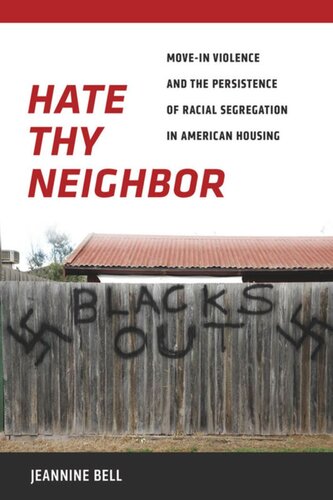

Most ebook files are in PDF format, so you can easily read them using various software such as Foxit Reader or directly on the Google Chrome browser.
Some ebook files are released by publishers in other formats such as .awz, .mobi, .epub, .fb2, etc. You may need to install specific software to read these formats on mobile/PC, such as Calibre.
Please read the tutorial at this link: https://ebookbell.com/faq
We offer FREE conversion to the popular formats you request; however, this may take some time. Therefore, right after payment, please email us, and we will try to provide the service as quickly as possible.
For some exceptional file formats or broken links (if any), please refrain from opening any disputes. Instead, email us first, and we will try to assist within a maximum of 6 hours.
EbookBell Team

0.0
0 reviewsDespite increasing
racial tolerance and national diversity, neighborhood segregation remains a
very real problem in cities across America. Scholars, government officials, and
the general public have long attempted to understand why segregation persists
despite efforts to combat it, traditionally focusing on the issue of “white
flight,” or the idea that white residents will move to other areas if their
neighborhood becomes integrated. In Hate
Thy Neighbor, Jeannine Bell expands upon these understandings by
investigating a little-examined but surprisingly prevalent problem of “move-in
violence:” the anti-integration violence directed by white residents at
minorities who move into their neighborhoods. Apprehensive about their new
neighbors and worried about declining property values, these residents resort
to extra-legal violence and intimidation tactics, often using vandalism and
verbal harassment to combat what they view as a violation of their territory.
Hate Thy Neighbor is the first work to seriously examine the
role violence plays in maintaining housing segregation, illustrating how
intimidation and fear are employed to force minorities back into separate
neighborhoods and prevent meaningful integration. Drawing on evidence that
includes in-depth interviews with ordinary citizens and analysis of Fair
Housing Act cases, Bell provides a moving examination of how neighborhood
racial violence is enabled today and how it harms not only the victims, but
entire communities.
By finally shedding
light on this disturbing phenomenon, Hate
Thy Neighbor not only enhances our understanding of how prevalent
segregation and this type of hate-crime remain, but also offers insightful
analysis of a complex mix of remedies that can work to address this difficult
problem.